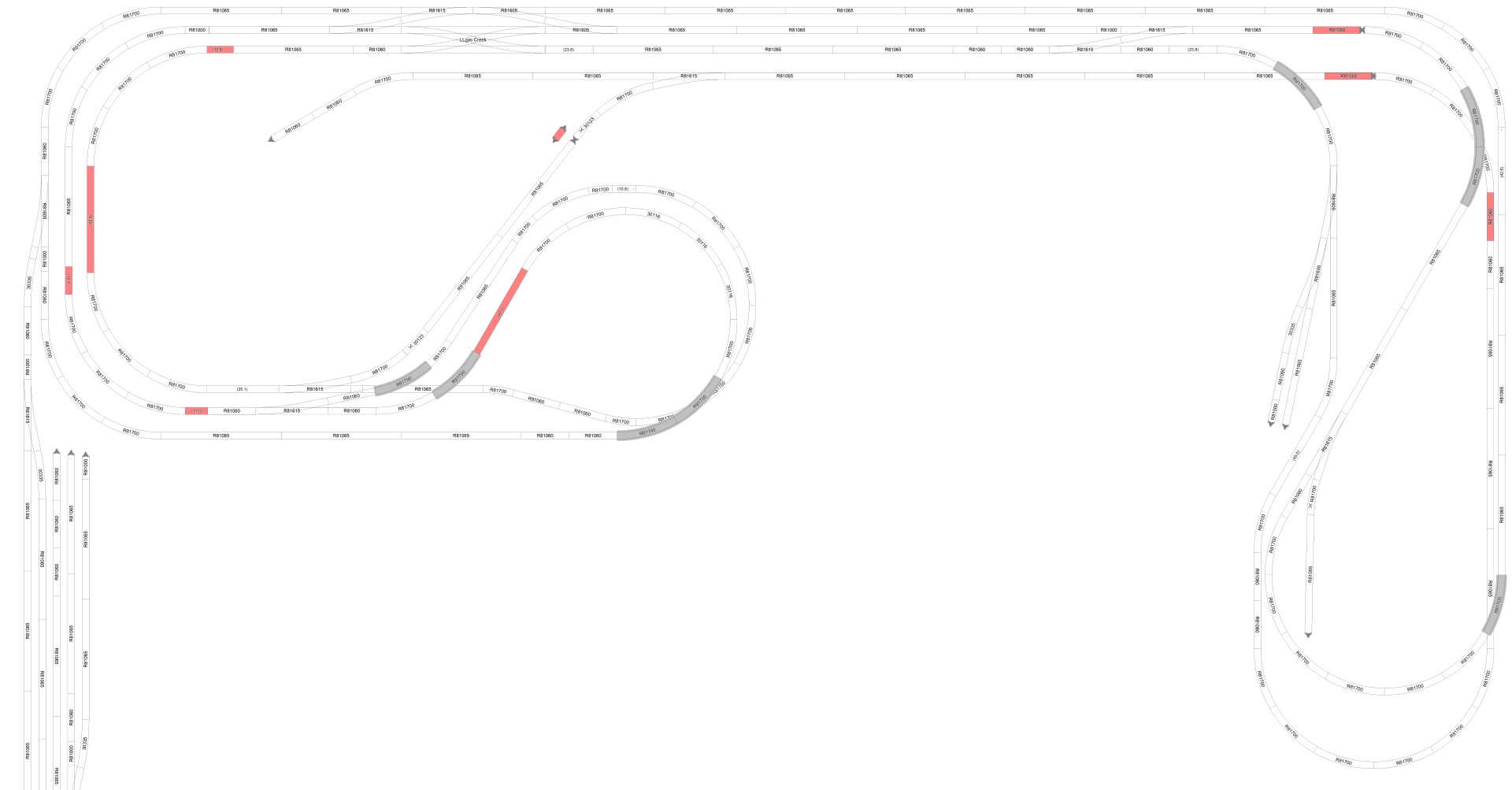This past weekend we had some really nice weather. I had my intermodals all weighted down and running good. I decided I would try to run a train with all the cars I have. You can see the configuration in the picture below. It string lined twice on me.
- I had two box cars behind the 3 engines. They are not particularly heaving so it wasn’t surprising. I moved them and left the nice heavy tankers in the front.
- The intermodals again. They were near the back this time. After picking up the fallen cars, I tried to pull the remaining cars and they would not budge. Turns out one of my tiny hopper cars had its hatch fall open and wedge itself over a turnout.
Answers to one/both of the following questions will help me determine potential pulling capacity.
- What is the longest trains you have run on your layouts including track radius and grade? Be as detailed as you wish.
- What are some possible issues that cause trains to fall off the tracks when pulling long trains?
I am wondering though what the potential pulling limit would be on my layout. I have included a picture of the current layout. What is the best way, other then running a long train and hoping it doesn’t string line, to determine what my potential safe max capacity is? Note: Bridges are marked with the grey outline. Red pieces are just pieces I had to trim/fudge to get the layout to work with respect to real life.
Some clarifications for my setup.
- All cars have metal wheels.
- All couplers are USA Train couplers
- None of them are body mounted. The only coupler changes made were to remove LGB style and use USA Train style couplers.
- Most cars weight 4lbs or more. A few weight less.
